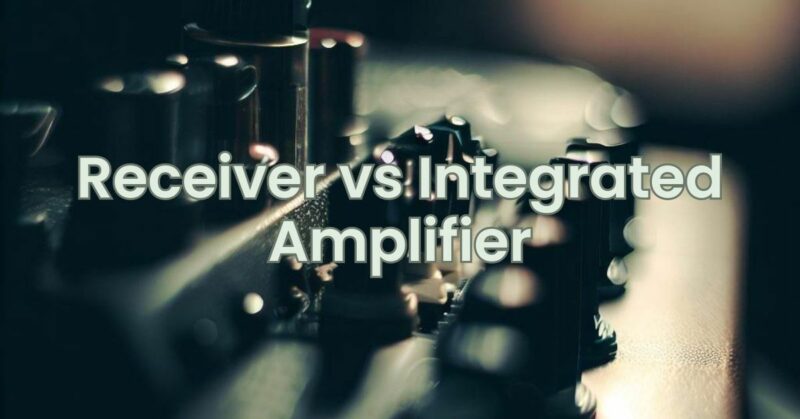When building an audio system, selecting the right amplifier is crucial for achieving optimal sound quality and performance. Two popular options are receivers and integrated amplifiers. While they share similarities in amplifying audio signals, there are key differences between the two. In this article, we will explore the distinctions and help you understand which one suits your audio needs best.
- Receiver:
A receiver is an all-in-one device that combines an audio amplifier with a radio tuner and various connectivity options. Here are the main features and functionalities of a receiver:
- Amplification: Receivers provide amplification for audio signals, allowing them to power speakers and deliver sound. They often include multiple channels for supporting surround sound configurations, such as 5.1 or 7.1.
- Radio Tuner: Receivers incorporate AM/FM radio tuners, allowing you to listen to broadcast radio stations without the need for an external tuner. This feature adds versatility to the device, providing access to a wide range of radio content.
- Connectivity: Receivers offer a variety of connectivity options, including analog and digital audio inputs, HDMI ports, and network connections. This allows you to connect various audio sources such as Blu-ray players, game consoles, streaming devices, and more.
- Processing Features: Many receivers include advanced audio processing features, such as Dolby Atmos, DTS:X, and room correction technology. These features enhance the audio experience by providing immersive surround sound and optimizing audio playback for your specific room acoustics.
- Integrated Amplifier:
An integrated amplifier combines a preamplifier and power amplifier in a single unit. Here are the main features and functionalities of an integrated amplifier:
- Amplification: Integrated amplifiers provide the necessary power to drive speakers and amplify audio signals. They often have dedicated channels for connecting stereo speakers and may support different speaker configurations.
- Preamplifier Functionality: Integrated amplifiers include built-in preamplifiers, which control the audio signals’ volume, tone, and source selection. This eliminates the need for a separate preamplifier unit in the audio system.
- Simplified Design: Integrated amplifiers offer a streamlined design, combining the essential components of preamplification and power amplification in one unit. They are generally more compact and straightforward compared to receivers.
- Audio Fidelity: Integrated amplifiers focus on delivering high-quality audio performance and preserving the integrity of the audio signals. They often prioritize audio purity and offer audiophile-grade components for optimal sound reproduction.
When deciding between a receiver and an integrated amplifier, consider your specific audio needs and system requirements. Receivers offer comprehensive functionality with built-in tuners, connectivity options, and advanced processing features, making them suitable for multi-channel audio setups and those seeking a one-stop solution. On the other hand, integrated amplifiers focus on delivering high-quality audio performance, prioritizing audio fidelity and simplicity.
If you require a multi-functional device with built-in radio tuners and advanced processing capabilities, a receiver might be the ideal choice. However, if your emphasis is on audio purity, simplicity, and the ability to customize your audio system, an integrated amplifier may better suit your needs. Ultimately, it’s important to evaluate your audio preferences, the desired features, and the specific requirements of your setup to make an informed decision.


